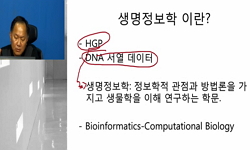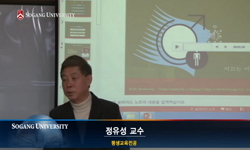This study examines changing masculinity among South Korean men in their twenties through the practice of makeup. To accomplish this, I conducted anthropological research on participants recruited through participant observation in KakaoTalk open chat...
http://chineseinput.net/에서 pinyin(병음)방식으로 중국어를 변환할 수 있습니다.
변환된 중국어를 복사하여 사용하시면 됩니다.
- 中文 을 입력하시려면 zhongwen을 입력하시고 space를누르시면됩니다.
- 北京 을 입력하시려면 beijing을 입력하시고 space를 누르시면 됩니다.
20대 한국 남성의 일상적 메이크업과 남성성의 변화 = Everyday Makeup among South Korean Men in their 20s and the Transformations of Masculinity
한글로보기https://www.riss.kr/link?id=T16998622
- 저자
-
발행사항
서울 : 서울대학교 대학원, 2024
- 학위논문사항
-
발행연도
2024
-
작성언어
한국어
- 주제어
-
DDC
301
-
발행국(도시)
서울
-
형태사항
Ⅴ, 152 ; 26 cm
-
일반주기명
지도교수: Olga Fedorenko
-
UCI식별코드
I804:11032-000000183005
- DOI식별코드
- 소장기관
-
0
상세조회 -
0
다운로드
부가정보
다국어 초록 (Multilingual Abstract)
South Korean men in their twenties desire makeup influenced by the Korean Wave, neoliberalism, and feminism. The soft masculinity that emerged in the late 1990s spread rapidly through mass media, and the image projected by recent K-pop male idols narrows the gap between masculinity and makeup through female consumers. Meanwhile, the beauty market stimulates male grooming through self-care discourse. Male participants use makeup primarily to improve their impression, particularly for dating rather than work. Heterosexual male participants apply makeup to appear wellgroomed to potential female partners, aligning with the masculinity desired by women.
Women exert direct and indirect influence on male participants' makeup practices. Men no longer consider women's makeup as obvious, influenced by the anti-corset movement. They view makeup as a courteous effort and engage in it to show respect to women. Women in the vicinity of male participants sometimes pressure them to start makeup and guide them toward what they consider appropriate. This reflects a feminine gaze from women in close proximity to men and makeup shop experts. Women not only provide material support but also serve as virtual presences to help men fulfill their makeup role, considering makeup as a representation of femininity. Women actively engage in facilitating men's adoption of makeup among South Korean men in their twenties.
Makeup initiated by women becomes entrenched in the peer groups of male participants. In the mandatory military service for South Korean men in their twenties, skincare rituals foster intimacy, expanding men's grooming concerns from the body to the face. While grooming for men used to focus on physique and fashion, contemporary South Korean men's interest in grooming extends to facial appearance, including makeup and plastic surgery. Makeup among men was once subject to ridicule within male relationships but is evolving into a skill to learn. Makeup acts as a medium for communication among men, shaping masculinity through negotiation.
Men's makeup reshapes social significance through interactions not only with peers but also with authority figures such as bosses, teachers, and parents. A man's face with makeup can either stand out as a makeupwearing man or blend in. Given the coexistence of negative and positive perceptions of men grooming in modern South Korean society, male participants expand the acceptance of makeup-wearing men by adjusting the visibility of their makeup based on others' reactions. They employ strategic attitudes to carve out a space in society as makeup-wearing men.
In conclusion, men's makeup becomes part of masculinity through interactions with individuals of different genders and ages. Male participants demonstrated how masculinity is socially constructed through their direct makeup practices and their relationships with surrounding environments. This study is significant in capturing how everyday makeup among South Korean men in their twenties contributes to the evolution of masculinity in contemporary South Korean society.
This study examines changing masculinity among South Korean men in their twenties through the practice of makeup. To accomplish this, I conducted anthropological research on participants recruited through participant observation in KakaoTalk open chat rooms where men who wear makeup gather, and at makeup shops that offer services for men. The meaning and practice of makeup among male participants in their twenties were found to be expanding within close relationships with women, men, and adults in their surroundings. The study argues that their makeup is encompassed into modern Korean masculinity through interactions with individuals of different genders and ages.
South Korean men in their twenties desire makeup influenced by the Korean Wave, neoliberalism, and feminism. The soft masculinity that emerged in the late 1990s spread rapidly through mass media, and the image projected by recent K-pop male idols narrows the gap between masculinity and makeup through female consumers. Meanwhile, the beauty market stimulates male grooming through self-care discourse. Male participants use makeup primarily to improve their impression, particularly for dating rather than work. Heterosexual male participants apply makeup to appear wellgroomed to potential female partners, aligning with the masculinity desired by women.
Women exert direct and indirect influence on male participants' makeup practices. Men no longer consider women's makeup as obvious, influenced by the anti-corset movement. They view makeup as a courteous effort and engage in it to show respect to women. Women in the vicinity of male participants sometimes pressure them to start makeup and guide them toward what they consider appropriate. This reflects a feminine gaze from women in close proximity to men and makeup shop experts. Women not only provide material support but also serve as virtual presences to help men fulfill their makeup role, considering makeup as a representation of femininity. Women actively engage in facilitating men's adoption of makeup among South Korean men in their twenties.
Makeup initiated by women becomes entrenched in the peer groups of male participants. In the mandatory military service for South Korean men in their twenties, skincare rituals foster intimacy, expanding men's grooming concerns from the body to the face. While grooming for men used to focus on physique and fashion, contemporary South Korean men's interest in grooming extends to facial appearance, including makeup and plastic surgery. Makeup among men was once subject to ridicule within male relationships but is evolving into a skill to learn. Makeup acts as a medium for communication among men, shaping masculinity through negotiation.
Men's makeup reshapes social significance through interactions not only with peers but also with authority figures such as bosses, teachers, and parents. A man's face with makeup can either stand out as a makeupwearing man or blend in. Given the coexistence of negative and positive perceptions of men grooming in modern South Korean society, male participants expand the acceptance of makeup-wearing men by adjusting the visibility of their makeup based on others' reactions. They employ strategic attitudes to carve out a space in society as makeup-wearing men.
In conclusion, men's makeup becomes part of masculinity through interactions with individuals of different genders and ages. Male participants demonstrated how masculinity is socially constructed through their direct makeup practices and their relationships with surrounding environments. This study is significant in capturing how everyday makeup among South Korean men in their twenties contributes to the evolution of masculinity in contemporary South Korean society.
국문 초록 (Abstract)
본 연구는 메이크업이 한국의 20대 남성들에게 실천되는 모습을 통해 변화하는 남성성을 고찰한다. 이를 위해 연구자는 메이크업을 하는 남성들이 모인 카카오톡 오픈채팅방과 남성 메이크...
본 연구는 메이크업이 한국의 20대 남성들에게 실천되는 모습을 통해 변화하는 남성성을 고찰한다. 이를 위해 연구자는 메이크업을 하는 남성들이 모인 카카오톡 오픈채팅방과 남성 메이크업 서비스를 제공하는 메이크업 샵에서 참여관찰을 하며 모집한 연구참여자를 대상으로 인류학적 연구를 수행했다. 20대 남성 연구참여자들에게 메이크업의 의미와 실천은 주변 여성, 남성, 어른과의 밀접한 관계 내에서 확장되고 있었다. 본 연구는 이들의 메이크업이 서로 다른 젠더와 나이를 가진 타인과의 상호작용을 통해 현대 한국 사회의 남성성으로 포섭되고 있다고 주장한다. 이러한 결과를 얻기 위해 연구자는 20대 남성 연구참여자를 둘러싼 한국 사회, 주변의 여성, 이들이 속한 남성 집단, 일상적 공간에서 마주치는 어른들이라는 네 축으로 나누어 남성들의 일상적 메이크업을 통해 남성성이 사회적으로 구성되어 나가는 방식을 살폈다. 현대 한국 사회의 20대 남성 연구참여자들은 한류와 신자유주의, 페미니즘의 영향으로 변화하는 남성성 속에서 메이크업을 원하게 된다. 1990년대 후반 등장한 부드러운 남성성은 대중매체를 통해 빠르게 확산되었으며, 최근 K-pop 남성 아이돌이 띠는 이미지는 여성 소비자를 경유해 남성성과 메이크업 간의 간격을 좁힌다. 한편 뷰티 시장은 자기관리 담론을 통해 남성이 외모관리에 필요를 느끼도록 부추긴다. 남성 연구참여자들은 메이크업을 통해 인상을 개선하고자 하는데, 그 주된 목적은 직장보다는 연애이다. 이성애자 남성 연구참여자들은 잠재적 연애 대상인 여성에게 잘 보이기 위해 메이크업을 하고, 이는 여성이 원하는 남성성과 연결된다. 여성은 남성 연구참여자들의 메이크업 실천에 직간접적 영향을 행사한다. 남성들은 탈코르셋 운동의 영향으로 여성의 메이크업을 당연하지 않게 여기게 되었다. 메이크업 행위를 노력이 들어간 예의로 여기고, 자신 또한 여성에게 예의를 갖추기 위해 메이크업을 한다. 남성 연구참여자들의 주변 여성은 남성이 메이크업을 시작하도록 직접 압력을 넣기도 하고, 자신이 보기에 적절한 이미지를 띠도록 방향을 유도하기도 한다. 이는 남성과 가까운 위치의 여성, 메이크업 샵의 전문가를 통한 여성적 응시의 반영이다. 또한 여성은 남성 연구참여자들의 메이크업을 둘러싼 물질적 기반뿐만 아니라 이를 갖추기 위한 구실로써 가상의 존재로 도움이 되기도 한다. 메이크업이 여성성을 대표하는 행위로 여겨져 온 만큼, 여성 범주는 20대 남성 연구참여자들이 메이크업에 도달하는 데에 적극 관여한다. 여성의 영향으로 시작된 메이크업은 남성 연구참여자들이 속한 또래 집단 내에서 남성성으로 자리잡는다. 한국의 20대 남성이 필수로 거치는 군대에서는 얼굴 피부를 가꿈으로써 친밀감을 나누는 문화를 통해 남성의 외모관리 범위가 몸에서 얼굴로 확장된다. 이전에 남성이 꾸밈이 몸매와 패션에 머물렀다면, 메이크업과 성형 등 현대 한국 남성의 단장에 대한 관심은 얼굴로 향하고 있다. 남성 간 관계에서 메이크업은 주변적 남성성의 일환으로 놀림거리가 되기도 했지만, 최근에는 선구적 행위로서 배우고 싶은 능력으로 의미가 바뀌어 나가고 있다. 남성 연구참여자들이 실천하는 구체적 메이크업 방법은 이성애자 남성성을 보존하는 규범적 방식으로 형성되기도 하지만, 다른 남성과의 대화를 통한 협상에 열려있다. 이처럼 메이크업 행위는 남성들 간 소통을 거쳐 남성성으로 받아들여진다. 남성 연구참여자들은 또래뿐 아니라 직장 상사, 학교 선생님, 부모님 등 자신보다 높은 위치의 타인과 교류함으로써 남성의 메이크업이 갖는 사회적 의미를 새롭게 구성한다. 메이크업을 한 남성 연구참여자의 얼굴 이미지는 메이크업을 한 남성으로 눈에 띄기도 하고, 그렇지 않기도 하다. 현대 한국 사회에는 외모를 가꾸는 남성에 대한 인식은 젠더나 세대에 따라 다르기에, 남성 연구참여자는 타인의 반응에 따라 자신의 메이크업을 비/가시화함으로써 메이크업한 남성으로서 인정받을 수 있는 범위를 넓혀간다. 자신에 대한 고정관념을 미리 방지하거나 때로는 웃어넘기기도 하고, 스스로 가지고 있던 고정관념을 주변 어른의 반응으로 깨기도 한다. 이렇게 남성 연구참여자들은 전략적 태도를 통해 자신이 메이크업한 남성으로서 사회에 설 자리를 만들어 나간다. 위와 같이 남성의 메이크업은 남성 당사자뿐만 아니라 서로 다른 젠더와 나이를 가진 주변 타인과의 상호작용을 통해 남성성의 일부로 협상되고 있다. 남성 연구참여자들은 자신의 직접적인 메이크업 실천과 더불어 그를 둘러싼 주변 환경과의 관계를 통해 남성성이 사회적으로 구성되는 과정을 보여주었다. 본 연구는 20대 남성의 일상적 메이크업이 현대 한국 사회의 남성성 변화에 어떤 방식으로 기여하는지 포착했다는 점에서 의의가 있다. 주요어 : 남성성, 남성, 메이크업, 신자유주의, 페미니즘, 젠더 학 번 : 2020-24893
목차 (Table of Contents)
- Ⅰ. 서론 1
- 1. 연구배경 및 연구질문 1
- 2. 선행연구 및 이론적 배경 8
- 3. 연구대상 및 연구방법 13
- 4. 논문 구성 20
- Ⅰ. 서론 1
- 1. 연구배경 및 연구질문 1
- 2. 선행연구 및 이론적 배경 8
- 3. 연구대상 및 연구방법 13
- 4. 논문 구성 20
- Ⅱ. 메이크업하는 남성 주체의 탄생 21
- 1. 남성성과 메이크업의 교차 22
- 2. 안전한 장치, ‘자기관리’ 담론의 활용 31
- 3. 연애와 남성의 메이크업 40
- Ⅲ. 여성을 통해 가능해지는 남성의 메이크업 47
- 1. 남성의 메이크업을 “예의”로 만든 페미니즘 48
- 2. 여성적 응시로 인한 메이크업 방법의 확장 54
- 3. 전문가와 상호작용하며 주조되는 ‘남자 메이크업’ 61
- 4. 메이크업 행위에의 도달을 위한 여성 범주 활용 68
- Ⅳ. 남성들 사이에서 남성성으로 협상되는 메이크업 75
- 1. 단장의 범위가 몸에서 ‘얼굴’로 확대되는 군대 문화 75
- 2. 메이크업, 놀림의 대상에서 따라하고 싶은 것으로 82
- 3. 남성성 보존을 위한 메이크업 규범과 협상의 가능성 93
- Ⅴ. 젠더와 세대를 가로질러 메이크업한 남성으로 인정받기 106
- 1. 일상적 공간에서 ‘메이크업한 남성’으로의 인식가능성 108
- 2. 서로 다른 남성상 사이 거리 좁히기 118
- Ⅵ. 결론 127
- 참고문헌 131
- Abstract 150












